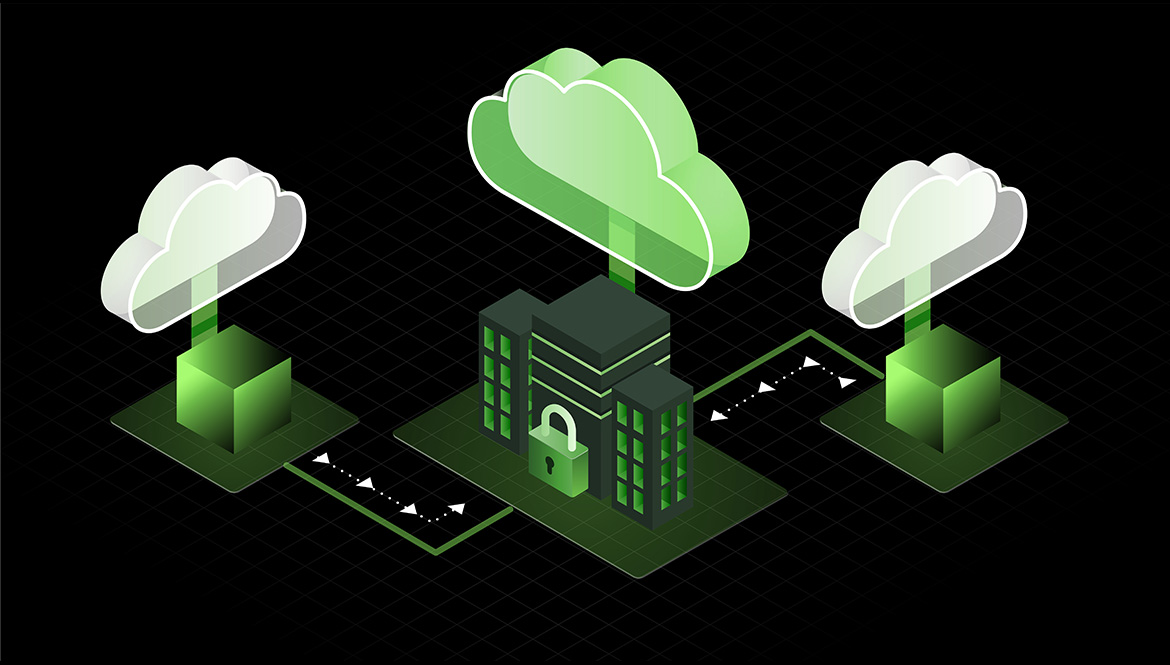Efficient data center infrastructure is foundational to business operations and overall success. Data is often referred to as the new gold or oil. Selecting and deploying servers and storage systems to maximize those precious resources—within a given footprint and budget is crucial to operations. The benefits of an efficient data center infrastructure and how the right solutions can help optimize your servers and storage systems are outlined below.
Importance of Efficient Data Center Infrastructure
Infrastructure is absolutely critical to your business. But companies need to think of storage as more than an IT component. Data center infrastructure contributes incredible value to the business because of its impact on customer trust and brand reputation. Yes, data centers serve as the backbone for storing and processing data, but their fundamental role is to maintain the integrity and security of customer (and company) information.
Reliable data center servers and storage systems demonstrate a commitment to customer data security and privacy. The right storage ensures uninterrupted operations and minimal downtime, so systems run smoothly and deliver consistent experiences to customers.
An often-forgotten component of choosing the right data center infrastructure is the environmental benefit. Although data centers are known for extensive energy consumption, with carefully selected storage that optimizes resources they have the potential to drive positive changes when it comes to sustainability.
Energy-efficient hardware and storage devices can help minimize power consumption while maintaining high performance. Even though energy efficiency and sustainability may not be the first consideration when evaluating data center infrastructure, these outcomes can have a considerable impact on a company’s environmental, social, and governance (ESG) goals.
High-Performance Servers for Data-Intensive Workloads
Companies can ensure their servers will handle data-intensive workloads by taking the following measures:
- Identify workload requirements: Understand specific requirements of data-intensive workloads, including power, memory, and storage demands. Analyzing the nature of those workloads and their projected growth will determine the necessary server specifications.
- Select the right hardware: Thoroughly evaluate different server options and then choose hardware that aligns with workload requirements. This includes processor speed, core count, memory capacity, storage options, and network connectivity.
- Optimize and tune: Once servers deploy, optimize performance by fine-tuning network parameters.
- Monitor performance: Monitoring metrics such as CPU utilization, memory utilization, disk I/O, and network bandwidth help identify areas where administrators can optimize storage.
- Plan for capacity requirements: The state of data changes quickly. Conduct capacity planning exercises to identify potential constraints and make informed decisions about upgrades or purchasing new hardware.
- Update firmware and software: Regular updates to server firmware and software provide performance enhancements, bug fixes, and security patches. This protects servers from potential vulnerabilities.
Scalable Server Architecture for Growing Demands
Scalable server architecture is another crucial component of efficient data center infrastructure. When businesses can expand computing resources, they’re able to handle growing data demands effectively and allocate resources to optimize performance.
To ensure the effectiveness of scalable server architecture for growing data demands, companies can follow these best practices:
- Capacity planning: Evaluate the expected growth rate, workload patterns, and performance requirements to determine the appropriate level of scalability necessary for server architecture.
- Modularity and standardization: These features ensure integration proceeds with no hiccups, components are interoperable with each other and existing components, and maintenance is simplified. It also future-proofs the architecture investment.
- Virtualization and cloud tech: Both virtualization and cloud services can provide scalable computing resources on demand.
- Automation and orchestration: Ensure efficient resource provisioning, configuration management, and workload distribution with automation tools that reduce human involvement. Orchestration ensures companies can scale infrastructure holistically without major disruptions.
- Collaboration with the right partners: Collaborating with the right technology partners allows companies to find components that offer the right balance between cost optimization and high performance, no matter what data needs look like now or in the future.
Reliability and Data Security in Servers
Data integrity and security ensure long-term operations and reduce risks — both from security breaches and accidental data loss due to human error. Servers should incorporate robust reliability and data security features to safeguard critical data assets. These features include redundant components, fault tolerance mechanisms, and advanced data protection technologies.
Self-encrypting drives (SEDs) can protect data at rest by encrypting it and protecting against unauthorized access. Secure data erasure methods help prevent improperly deleted data. Security helps companies maximize the use of both servers and storage.
Exploration of Seagate Storage Systems for Data Centers
Seagate storage systems are designed with features to address the specific requirements of data centers. These data center storage systems offer high performance, scalability, and data protection. Let’s explore how businesses can use Seagate solutions to optimize data center servers and storage systems to achieve maximum efficiency.
Integration with Data Center Infrastructure
Seagate storage solutions are engineered to integrate seamlessly with your existing data center infrastructure. Products like Seagate Exos® CORVAULT™ self-healing storage offerings provide petabyte-scale storage and maximum-density enclosures to expand storage. Extensive testing and validation procedures verify Seagate’s compatibility with a wide range of data center environments.
High-Capacity Storage for Big Data and Cloud Applications
Seagate’s lineup of storage systems caters to the ever-growing need for high-capacity storage in big data and cloud applications. For example, the Seagate Exos AP 5U84 integrates compute with massive capacity, allowing businesses to handle larger data center applications efficiently. This all-in-one, low-TCO, integrated compute and high-density storage system maximizes investments while supporting current and next-generation hard drives and solid-state drives (SSDs). With support for up to 1.344PB of data, this system offers the density and cost for performance that data-intensive environments require. Organizations experience more freedom and flexibility to optimize cloud processing and storage without wasting resources.
Encryption and Data Security Measures
Data security is foundational to a data center architecture and often one of the first questions a company asks when researching a solution. Seagate storage solutions are designed with built-in, smart security features to protect data without creating needless access complexity. For example, Seagate Secure™ SSDs and hard drives offer reliable encryption, ensuring the confidentiality and integrity of stored data. And features like self-encrypting drives (SED), secure file transfer protocol (SFTP), and administrator access controls comply with stringent security requirements.
Integration and Optimization of Seagate Solutions in Data Center Environments
Seagate understands how important seamless integration is to maximizing data assets and keeping them safe.
- Standardized zoning: Seagate storage systems often incorporate standardized zoning to simplify data storage management and organization.
- Universal ports and connectors: Universal ports and connectors support a wide range of connectivity options with different networking technologies.
- Interchangeable components: A modular design approach allows companies to change out components as necessary within storage solutions. Controllers, drives, power supplies, and other elements can be swapped out or upgraded without disrupting the entire system. It also simplifies maintenance and repairs to minimize downtime.
- Management tools and APIs: Comprehensive management tools and APIs enable seamless integration with existing data center management systems. Via a unified system, users can monitor and manage Seagate storage solutions along with other components.
- Flexibility and scale: Seagate solutions are designed to scale and adapt to changing data center requirements. They offer flexibility with capacity expansion, performance tuning, and connectivity options. This scalability ensures businesses can seamlessly integrate additional storage capacity and optimize performance as data needs evolve.
Future Trends and Innovation
Seagate’s heat-assisted magnetic recording (HAMR) roadmap and ongoing efforts to increase areal density will allow data centers to deploy higher capacity storage solutions. These new offerings will significantly impact how companies set up and use servers and systems in their data centers. Here’s what’s coming:
- Higher storage capacities: HAMR technology will allow Seagate to push the boundaries of storage capacity. The forthcoming 30+TB hard drives and planned HDDs with 50TB capacities and higher will offer unprecedented storage capabilities.
- Seamless integration: The 22TB and 24TB hard drives—which use perpendicular magnetic recording (PMR) and shingled magnetic recording (SMR) tech respectively—are designed as drop-in compatible solutions for existing cloud data center hardware and infrastructure. This minimizes the need for extensive validation and certification procedures.
- Enhanced performance and efficiency: The focus on areal density contributes to improved performance and efficiency. Seagate delivers higher data transfer rates and faster access to data in storage.
- Scalability and rapid capacity expansion: These capabilities provide scalable storage options and organizations can deploy these drives more quickly.
- Future-proofing and innovation: Continuous advancements in areal density and platter technology allow organizations to stay ahead of evolving data demands.
Partner with Seagate for Improved Data Center Environments and Storage Strategies
Seagate offers significant benefits for companies looking to optimize data storage solutions in their data centers. Our products provide seamless integration, scalability, and advanced innovations designed to minimize deployment complexity and reduce disruption. These solutions can easily grow alongside your data requirements.
Our commitment to data security, sustainability, and reliability further solidifies us as your ideal solution for data center servers and storage systems. Advanced encryption and data protection measures keep your most valuable assets safe, and energy-efficient designs reduce power consumption without compromising performance. It’s time to build a robust, future-ready storage infrastructure that optimizes performance and security in a dynamic, data-driven landscape.
















